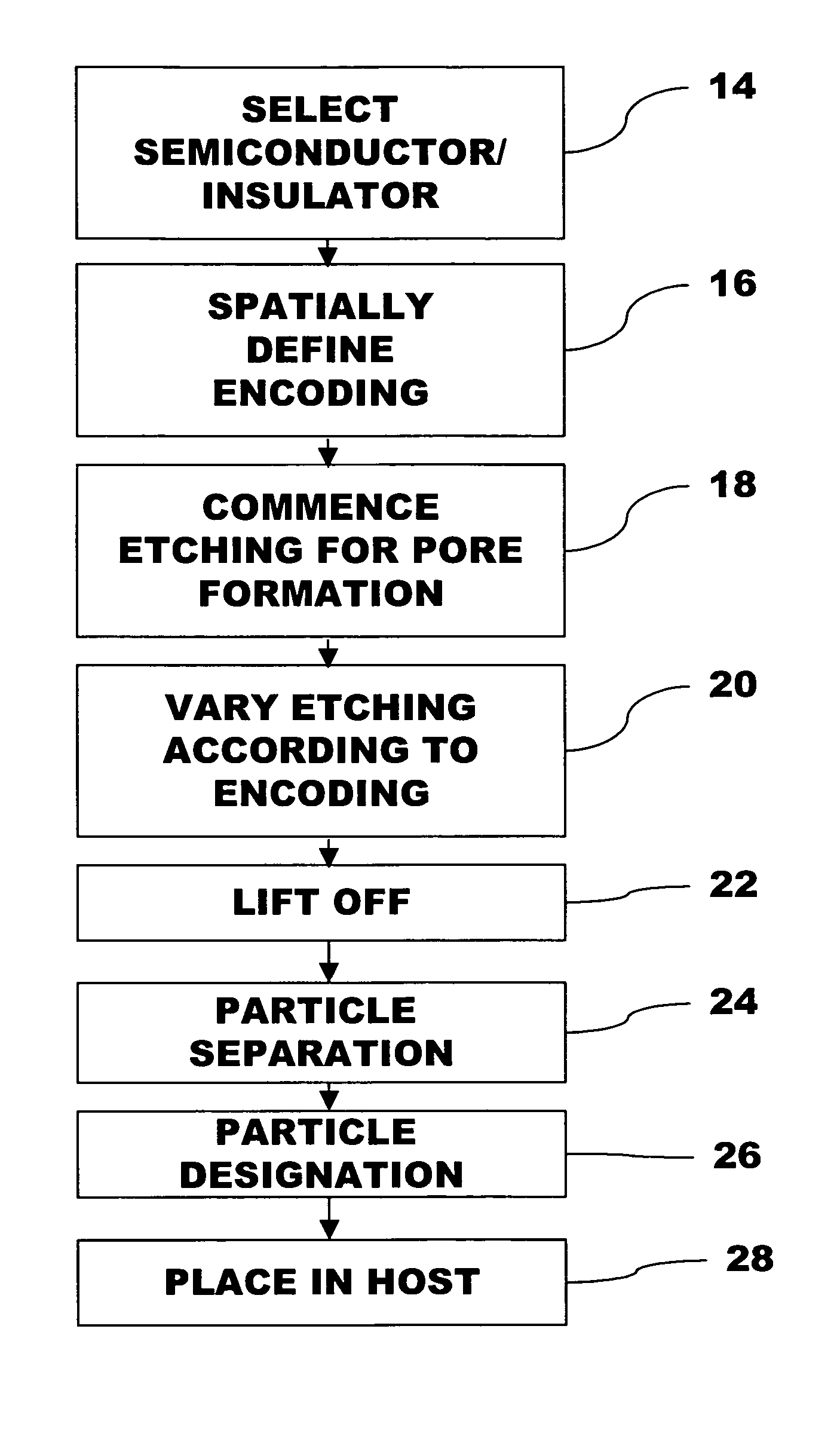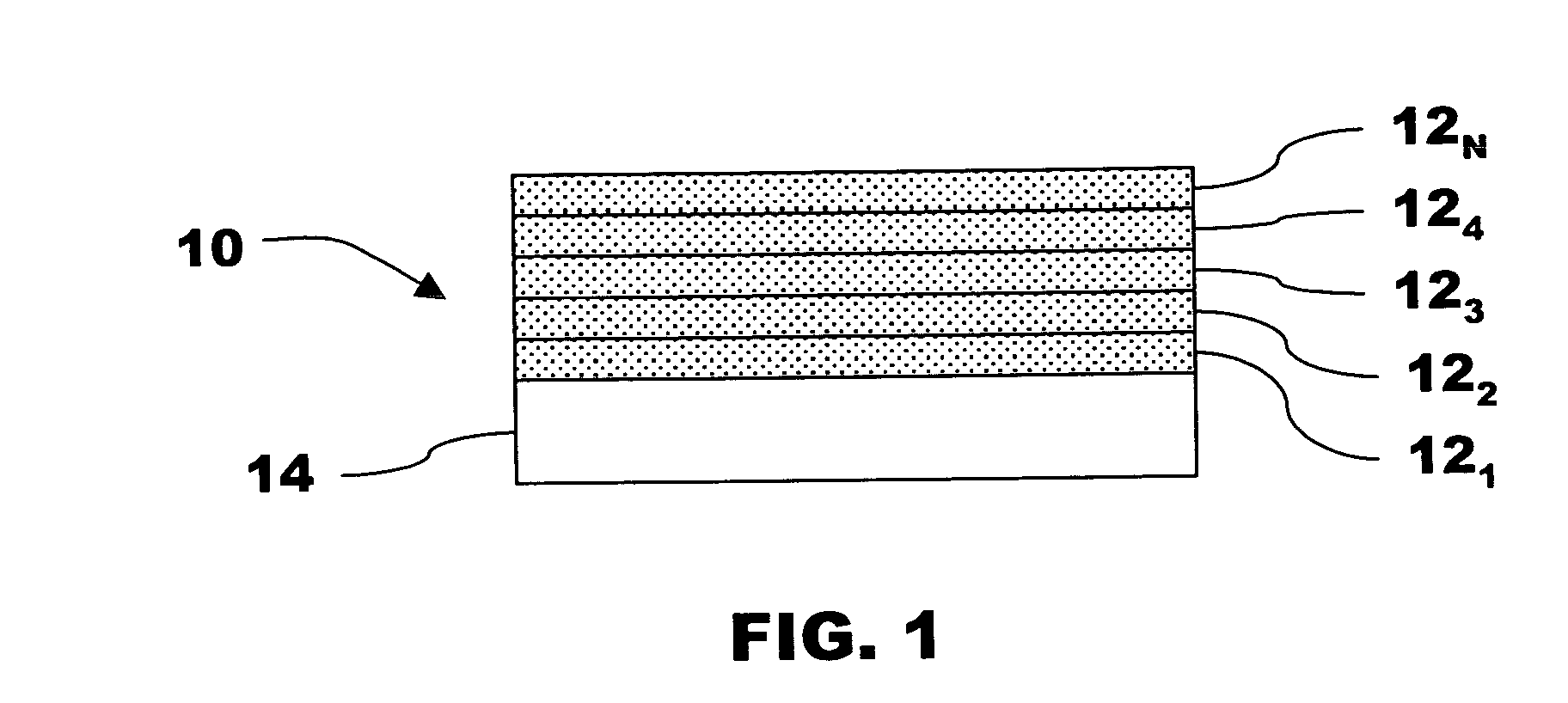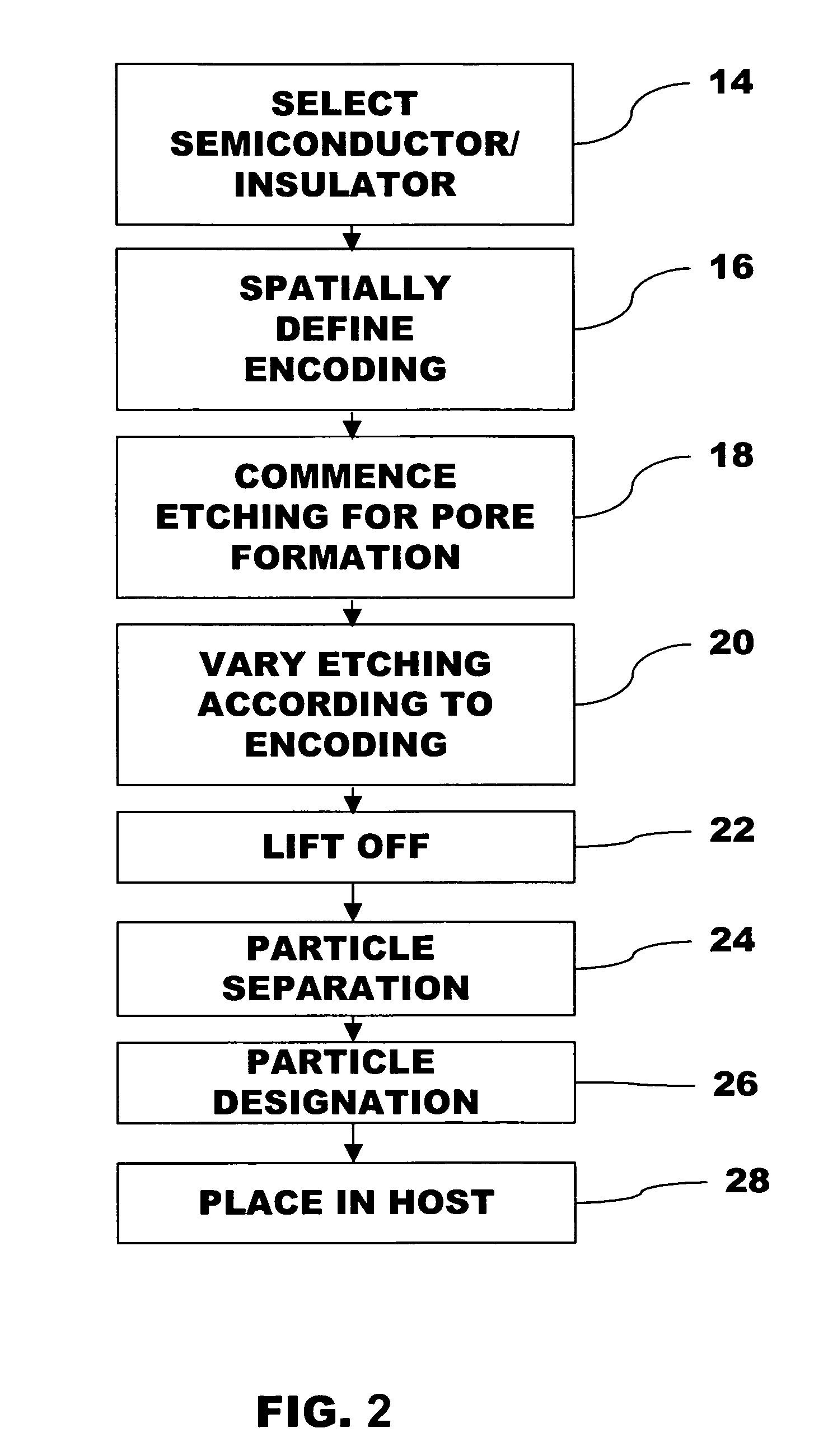Method for forming optically encoded thin films and particles with grey scale spectra
a grey scale spectra and optical encoder technology, applied in the field of encoding, can solve the problems of slow diffusion rate of labeling/encoding itself, difficult to obtain number, and limit the concentration range of analytes being sensed in positional arrays
- Summary
- Abstract
- Description
- Claims
- Application Information
AI Technical Summary
Benefits of technology
Problems solved by technology
Method used
Image
Examples
Embodiment Construction
[0011]The invention concerns a particle having a grey scale code embedded in its physical structure by refractive index changes between different regions of the particle. A change in the refractive index is preferably obtained by varying porosity formed in the particle. Reflections taken from the particles produce an optical signature, in the visible and / or non-visible wavelengths. In preferred embodiments, the number of peaks, their locations, and intensities can be used to produce a high number of unique optical signatures exhibiting grey scale codes. In preferred embodiment formation methods, a porous encoded structure is produced by an etching process during which the etching conditions are varied during pore formation according to a computer generated waveform designed to produce a grey scale coding. A dicing may be conducted to form individual encoded particles having a range of small sizes, e.g., from hundreds of nanometers to hundreds of microns.
[0012]Methods and particles o...
PUM
| Property | Measurement | Unit |
|---|---|---|
| porosity | aaaaa | aaaaa |
| frequency | aaaaa | aaaaa |
| reflectivity | aaaaa | aaaaa |
Abstract
Description
Claims
Application Information
 Login to View More
Login to View More - R&D
- Intellectual Property
- Life Sciences
- Materials
- Tech Scout
- Unparalleled Data Quality
- Higher Quality Content
- 60% Fewer Hallucinations
Browse by: Latest US Patents, China's latest patents, Technical Efficacy Thesaurus, Application Domain, Technology Topic, Popular Technical Reports.
© 2025 PatSnap. All rights reserved.Legal|Privacy policy|Modern Slavery Act Transparency Statement|Sitemap|About US| Contact US: help@patsnap.com



